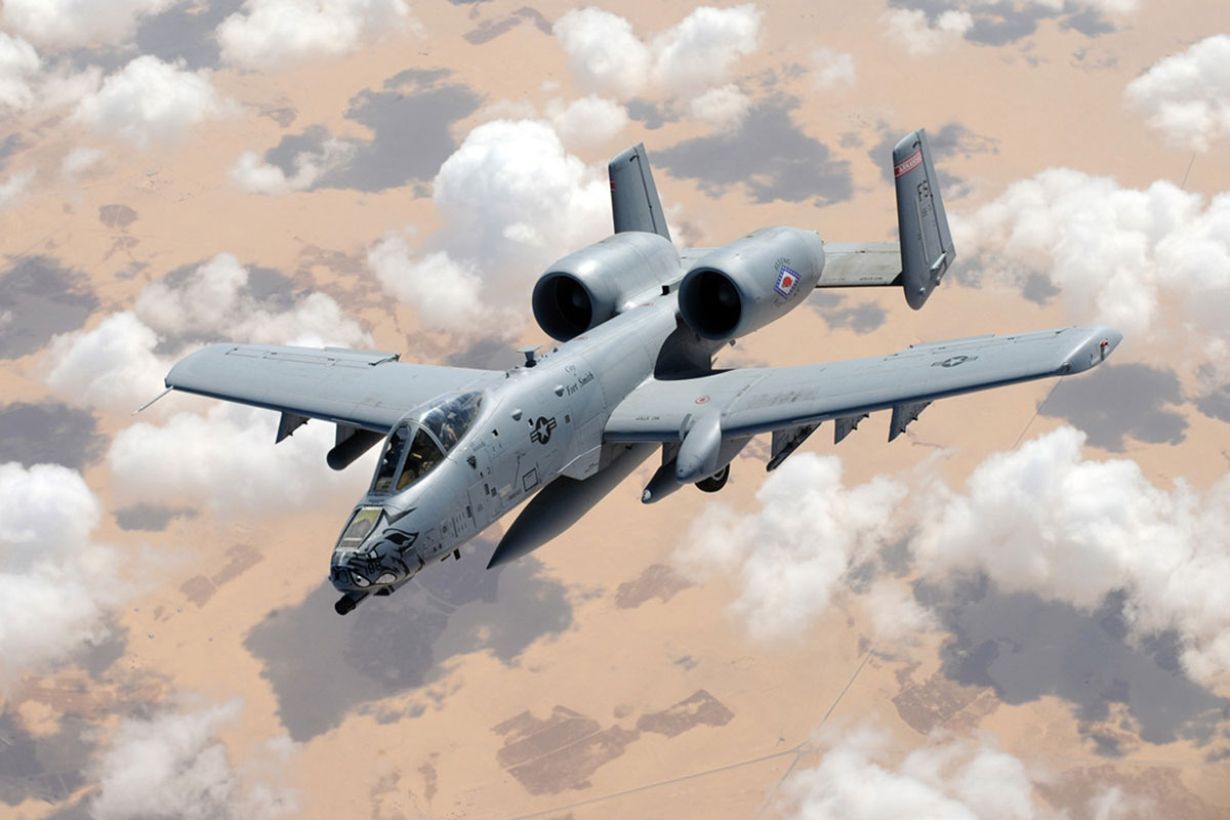Geopolitical developments are having a bearing on the effectiveness of the US’s military campaign against Yemen’s Houthi (Ansarallah) group. The US Navy (USN) says Iran is lending surveillance, reconnaissance, and targeting information to Houthi drones and anti-ship cruise and ballistic missiles.
After Gripen Jet Loss, SAAB Tastes Success In Canada; Swedish Firm Wins RPG-70 NG Contract
Meanwhile, the United Arab Emirates (UAE) has reportedly “restricted” American A-10 Thunderbolt/Warthog and MQ-9 Reaper drones based out of the Al-Dhafra air base to strike the outfit.
The latter is particularly vexing, as the American military can only use the USS Dwight D. Eisenhower aircraft carrier sailing near the Gulf of Aden for strikes on the southern Arabian country, claiming to have been hitting fixed and moving Houthi anti-ship launchers.
The US also faces a series of techno-tactical challenges where it has to expend costly air defense missiles worth $2 million for shooting down cheap Houthi drones worth between $2,000 to $10,000.
Abu Dhabi’s refusal to cooperate with Washington is also a result of a geopolitical realignment away from the US towards a regional consolidation that has seen the Emiratis and the Saudis softening ties with Iran.
‘Iran Providing Targeting’
Vice Admiral Brad Cooper, deputy commander of the US Central Command, told CBS that “Iranian support has been critical for the Houthis’” attacks on commercial shipping in the Red Sea. “The Iranian Revolutionary Guard Corps (IRGC) is inside Yemen, and they are serving side by side with the Houthis, advising them and providing target information. They’re resupplying them as we sit here right now at sea. We know this is happening. They’re advising them, and they’re providing target information. This is crystal clear.”
Thursday also saw the Central Command announcing a January 28 seizure by a US Coast Guard ship in the Arabian Sea of a Yemen-bound Iranian shipment.
This contained “more than 200 packages of medium-range ballistic missile components, explosives, unmanned underwater/surface vehicle components, military-grade communication and network equipment, anti-tank guided missile launcher assemblies and other military components.”
“This is yet another example of Iran’s malign activity in the region. Their continued supply of advanced conventional weapons to the Houthis is in direct violation of international law and continues to undermine the safety of international shipping and the free flow of commerce,” CENTCOM chief General Michael Erik Kurilla said.
Another report on NBC quoted unnamed US defense officials identifying the Iranian ship MV Behshad for “sharing intelligence with Houthi rebels,” which forced the Americans to conduct a “cyberattack” on the vessel earlier this month.
The MV Behshad was operating close to the Chinese military base in Djibouti “to discourage US naval forces from trying to physically attack or board the suspected spy vessel.”
‘UAE Restricting Air Bases US Warplanes Ops’
Politico meanwhile reported that “some Arab countries, including the United Arab Emirates,” are “increasingly restricting” the US from “using military facilities on their soil to launch retaliatory airstrikes on Iranian proxies.”
UAE is home to the Al-Dhafra air base that hosts US jets like the F-16s, A-10 Warthogs, and the MQ-9 Reapers.
Another Department of Defense (DoD) official, however, “disputed the premise” about “tension” between the US and the UAE over American military basing, claiming “A-10 attack aircraft and armed MQ-9 Reaper” drones have “recently operated out of Al-Dhafra in support of operations to support shipping in the Arabian Gulf.”

It can be said that while US aircraft may be operating out of Al-Dhafra, Emirati resistance is possibly preventing the optimal utilization of the capability, lending an advantage to the Houthis.
This trend to ease tensions with the Iranian-backed groups was also discernible in some months of 2022 when the UAE and KSA were not naming or criticizing Iran in their official statements reporting the periodic Houthi strikes against their facilities.
That itself could be assumed to be Tehran successfully establishing that the Houthis were acting independently and were not completely under its tutelage, to assuage Arab and Emirati suspicions.
Presently, the Houthis’ are not targeting KSA and UAE’s marine traffic, and are only striking US, British warships and Israel-bound merchant vessels. It reveals they too agree with Iran’s view of reducing tensions with the Arabs by overlooking differences. Both the Persians and Arabs are reciprocating by ending their usual acts of hostility.
Saudi-Iranian Normalization Advancing Further
It ties into a broader global emergence of Russia and China as the region’s new preferred economic and strategic partners, particularly following the Beijing-brokered rapprochement between Tehran and Riyadh in early 2023, which saw the two bitter regional rivals restoring diplomatic ties. They have coordinated their positions on a series of international issues, with the war in Gaza and the resultant human toll putting them on common ground.
The opposition to Israel’s war led them to not act against Houthi strikes on Tel Aviv’s commercial shipping that began in October 2023 and join the subsequent US-led Operation Prosperity Guardian against the group.
More profound solidarity with Palestine among their domestic Arab populations and support for the Houthis and Hamas are also motivating Riyadh and Abu Dhabi’s diplomacy, covered in a previous EurAsian Times analysis.
Politico, too, said the conflict has “pitted Arab governments’ interests in assuaging their citizens’ anger toward Israel.” The “restrictions” on US activities on their soil “reflect Arab calculations on how supportive they can be without angering Iran.”
February 16 also saw an unprecedented meeting between the Saudi Ambassador and Iran’s Minister of Defense, Mohammad Reza Qorani Ashtiani. This was preceded by a high-level military delegation from Tehran visiting Riyadh and participating in the World Defense Show.
The Iranian delegation also held talks with the Saudi Chief of General Staff. Prior to that, in December 2023, Iran’s Chief of General Staff had a phone call with the Saudi Minister of Defense.
Thus, it is inconceivable that the direct military contacts will not have involved coordinating Tehran’s tacit support for the Houthis against Israel with the American element in the calculation.
- The author can be reached at satamp@gmail.com
- Follow EurAsian Times on Google News




